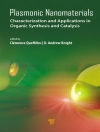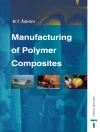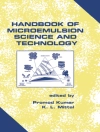In this comprehensive yet compact monograph, Michel W. Barsoum, one of the pioneers in the field and the leading figure in MAX phase research, summarizes and explains, from both an experimental and a theoretical viewpoint, all the features that are necessary to understand and apply these new materials. The book covers elastic, electrical, thermal, chemical and mechanical properties in different temperature
regimes.
By bringing together, in a unifi ed, self-contained manner, all the information on MAX phases hitherto only found scattered in the journal literature, this one-stop resource offers researchers and developers alike an insight into these fascinating materials.
Table des matières
INTRODUCTION
Introduction
History of the MAX Phases
STRUCTURE, BONDING, AND DEFECTS
Introduction
Atom Coordinates, Stacking Sequences, and Polymorphic Transformations
Lattice Parameters, Bond Lengths, and Interlayer Thicknesses
Theoretical Considerations
To Be or Not to Be
Distortion of Octahedra and Trigonal Prisms
Solid Solutions
Defects
Summary and Conclusions
ELASTIC PROPERTIES, RAMAN AND INFRARED SPECTROSCOPY
Introduction
Elastic Constants
Young’s Modulus and Shear Modulus
Poisson’s Ratios
Bulk Moduli
Extrema in Elastic Properties
Effect of Temperature on Elastic Properties
Raman Spectroscopy
Infrared Spectroscopy
Summary and Conclusions
THERMAL PROPERTIES
Introduction
Thermal Conductivities
Atomic Displacement Parameters
Heat Capacities
Thermal Expansion
Thermal Stability
Summary and Conclusions
ELECTRONIC, OPTICAL, AND MAGNETIC PROPERTIES
Introduction
Electrical Resistivities, Hall Coefficients, and Magnetoresistances
Seebeck Coefficients, Theta
Optical Properties
Magnetic Properties
Superconducting Properties
Summary and Conclusions
OXIDATION AND REACTIVITY WITH OTHER GASES
Introduction
Ti3Si C2
Tin+1Al Xn
Solid Solutions between Ti3Al C2 and Ti3Si C2
Cr2Al C
Nb2Al C and (Ti0.5, Nb0.5)2Al C
Ti2SC
V2Al C and (Ti0.5, V0.5)2Al C
Ti3Ge C2 and Ti3(Si, Ge)C2
Ta2Al C
Ti2Sn C, Nb2Sn C, and Hf2Sn C
Ti2In C, Zr2In C, (Ti0.5, Hf0.5)2In C, and (Ti0.5, Zr0.5)2In C
Sulfur Dioxide, SO2
Anhydrous Hydrofluoric, HF, Gas
Chlorine Gas
Summary and Conclusions
Appendix
CHEMICAL REACTIVITY
Introduction
Diffusivitiy of M and A Atoms
Reactions with Si, C, Metals, and Intermetallics
Reactions with Molten Salts
Reactions with Common Acids and Bases
Summary and Conclusions
DISLOCATIONS, KINKING NONLINEAR ELASTICITY, AND DAMPING
Introduction
Dislocations and Their Arrangements
Kink Band Formation in Crystalline Solids
Incipient Kink Bands
Microscale Model for Kinking Nonlinear Elasticity
Experimental Verification of the IKB Model
Effect of Porosity
Experimental Evidence for IKBs
Why Microcracking Cannot Explain Kinking Nonlinear Elasticity
The Preisach –
Mayergoyz Model
Damping
Nonlinear Dynamic Effects
Summary and Conclusions
MECHANICAL PROPERTIES: AMBIENT TEMPERATURE
Introduction
Response of Quasi-Single Crystals to Compressive Loads
Response of Polycrystalline Samples to Compressive Stresses
Response of Polycrystalline Samples to Shear Stresses
Response of Polycrystalline Samples to Flexure Stresses
Response of Polycrystalline Samples to Tensile Stresses
Hardness
Fracture Toughness and R-Curve Behavior
Fatigue Resistance
Damage Tolerance
Micromechanisms Responsible for High K1c, R-Curve Behavior, and Fatigue Response
Thermal Sock Resistance
Strain Rate Effects
Solid Solution Hardening and Softeing
Machinability
Summary and Conclusions
MECHANICAL PROPERTIES: HIGH TEMPERATURES
Introduction
Plastic Anisotropy, Internal Stresses, and Deformation Mechanisms
Creep
Response to Other Stress States
Summary and Conclusions
EPILOGUE
Outstanding Scientific Questions
MAX Phase Potential Applications
Forming Processes and Sintering
Outstanding Technological Issues
Some Final Comments
INDEX
A propos de l’auteur
Michel W. Barsoum is Distinguished and Grosvenor-Professor in the Department of Materials Science and Engineering at Drexel
University, USA. His research group was the fi rst to fabricate and fully characterize the MAX phases, an important new class of machinable
ternary carbides and nitrides on which he and his collaborators have published more than 200 papers. He is also the author of a textbook
on the Fundamentals of Ceramics, the leading textbook in the field. Prof. Barsoum was awarded a Humboldt Max Planck Research Award
in 2000 and spent one year at the Max Planck Institute in Stuttgart, Germany. In 2008 – 2009 he spent a sabbatical year at Los Alamos
National Lab as the prestigious Wheatley Scholar. He is a Fellow of the American Ceramic Society and the World Academy of Ceramics.
In addition, Prof. Barsoum is visiting professor at Linkoping University in Sweden. With a h index of close to 50, his work has been highly and
widely cited. He is on ISI’s most highly cited authors list. He is the author of the two entries on the MAX phases in the Encyclopedia of
Materials Science and Engineering.












